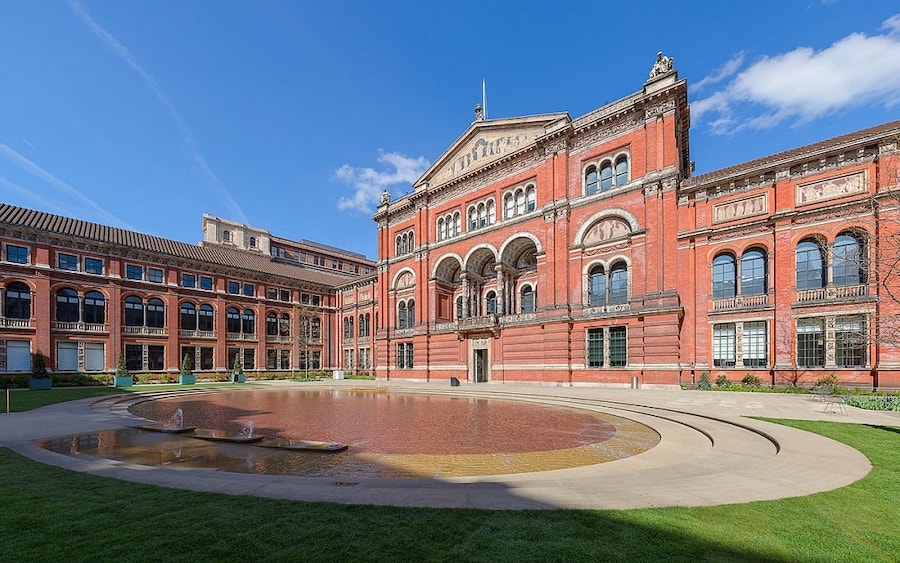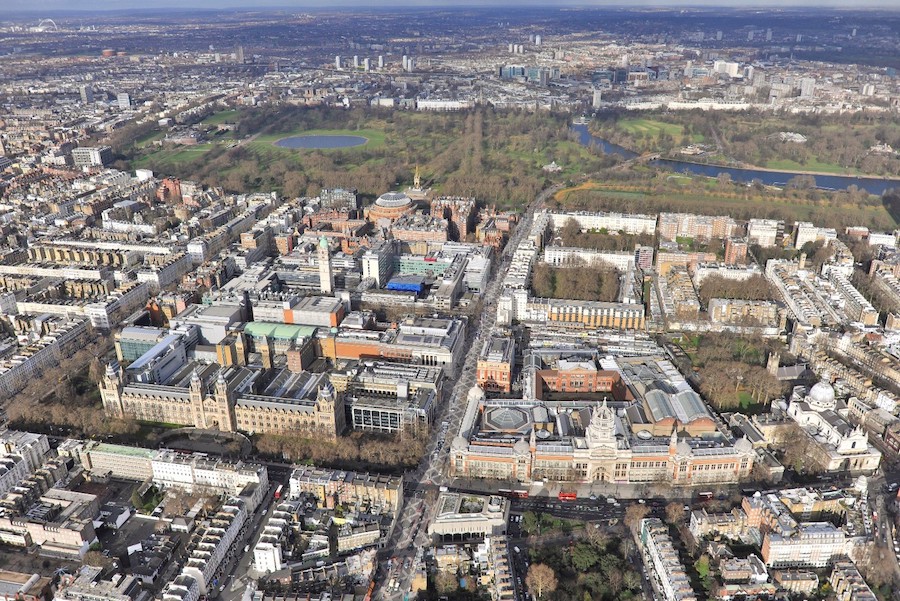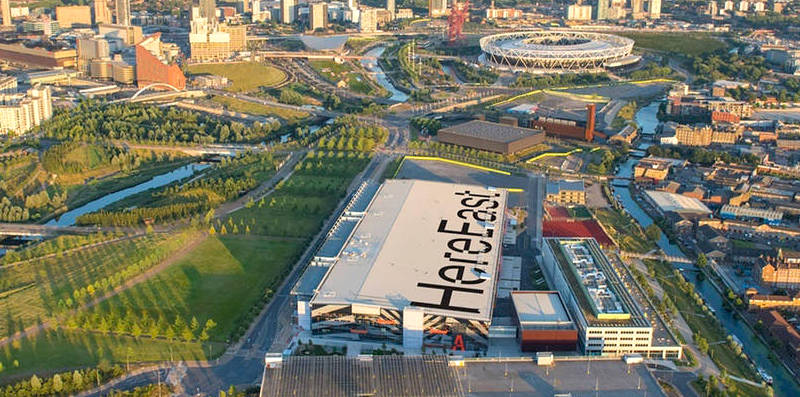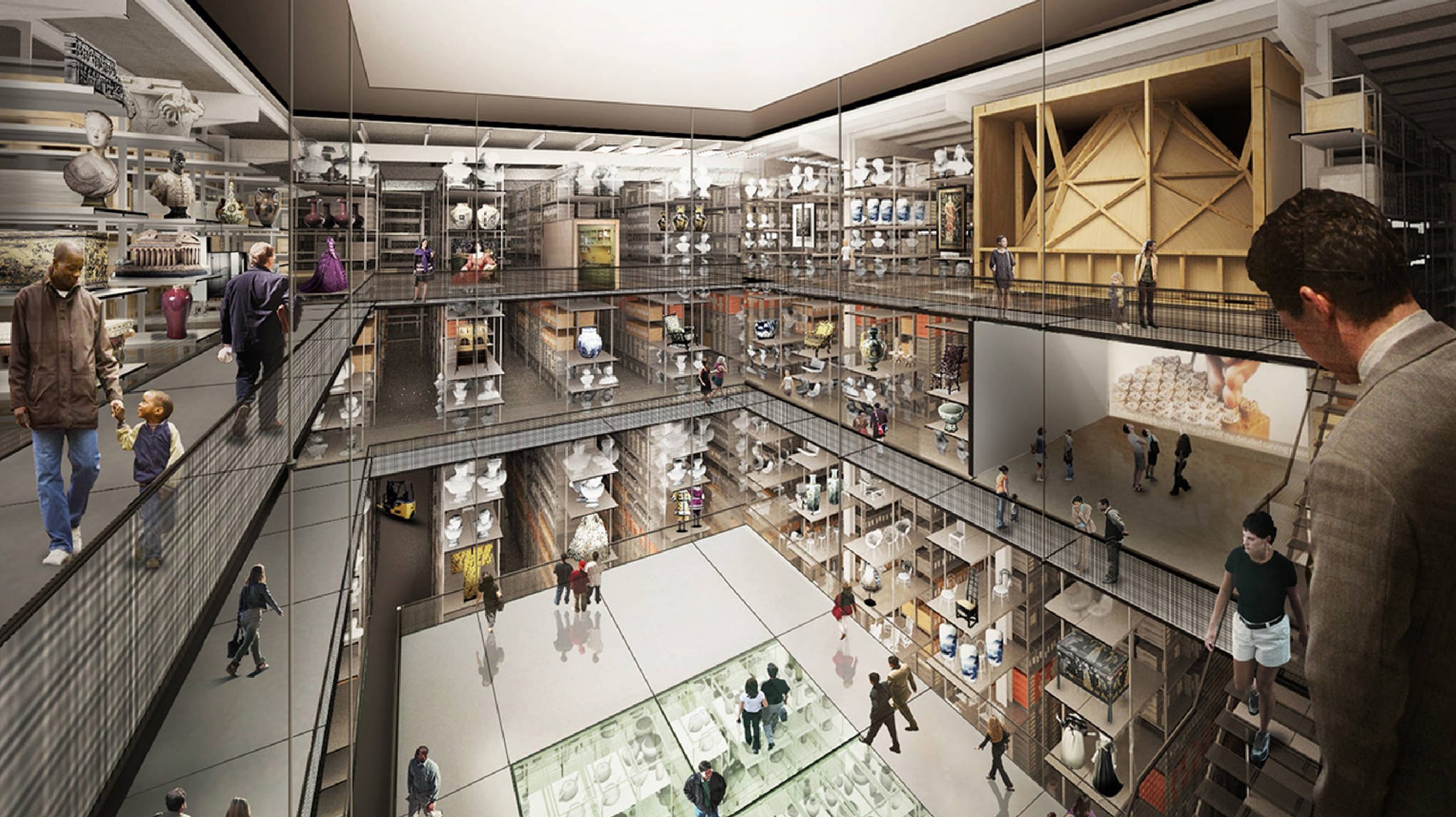This article originally appeared on blooloop, our content partner.
The V&A’s FuturePlan project will see the creation of new galleries and visitor facilities as well as restoration work on the original building in Kensington. Plans for V&A East include a new five-story museum, alongside a new collection and research centre, located in London’s Queen Elizabeth Olympic Park, Stratford.
V&A East will form part of a new culture and education centre within the Olympic Park called East Bank. Blooloop spoke to Tim Reeve and Gus Casely-Hayford to find out more about the exciting developments at the V&A East.
Tim Reeve has been Deputy Director of the V&A since 2013. In this role, he has a strategic operational overview of all museum activities. He also leads divisions responsible for commercial and digital activities, exhibitions, financing, resources, marketing, international strategy and the FuturePlan project.
Dr Gus Casely-Hayford OBE, Director of V&A East, is a curator, cultural historian, broadcaster and author. Before joining this project, Casely-Hayford was director of the Smithsonian National Museum of African Art in Washington D.C. He’s also presented several TV programs and served on the board of many cultural institutions, including the National Trust and the National Portrait Gallery.
The V&A and COVID-19
Reeve begins by talking about the current situation at the V&A. Like cultural institutions all over the world, the museum has been greatly impacted by the global pandemic. The V&A first reopened in August with reduced capacity. It is now open again, following the U.K.’s recent circuit-breaker lockdown which ended on December 2.

The V&A in Kensington. Image: the V&A, London
“We’ve had to redesign the way we run the museum as a public building. Normally the V&A, in happier times, is extremely busy. What people get now, because of the need for us to reduce capacity very markedly, is a unique experience. They feel like they have some of the galleries all to themselves. So in one respect, there’s a very positive component to the new way we’re operating.
“But the fact is, we can’t carry on like this for very long. Visitor numbers in this new regime are 15 percent of what they would normally be. Looking ahead to next year and the year after, we need to try and work out how we can gradually get back to something like we were before, in terms of being a cultural attraction.
“We have tried to create a safe environment — somewhere people can come in and relax and reconnect with the collections. It feels like we’ve got the balance right in some very unusual circumstances, and it will do as for now. But it’s not a sustainable way of running a museum, so I would summarize it as so far, so good.”
Kimono: Kyoto to Catwalk
Two weeks before the U.K. went into its first lockdown and the V&A closed its doors in March 2020, the museum had just opened a new exhibition, Kimono: Kyoto to Catwalk.
“We had wonderful reviews,” says Reeve. “It’s such a vibrant exhibition. The collections we’ve been able to put together are astonishing. They tell a really important story of the kimono as a cultural icon and its impact on the world.”
“Having to close that after two weeks and mothball it for months, was a very difficult thing to do. On the plus side, we have been able to extend it. So when we reopened, it was still there for people to visit. It’s quite a linear exhibition and it’s almost one way. This means that it’s easy for people to find their way through it safely.
“We are able to offer guided tours. We did a brilliant curated tour of the kimono exhibition online during lockdown. And as we move into a situation where we are able to open a bit more, we are doing things like special events and member events.
“We’re not able to provide the same capacity. But those who are going through are able to enjoy it without it being too busy. So we have to take the positives.”
Hitting the ground running
For Gus Casely-Hayford, the COVID-19 crisis and subsequent lockdown came just as he joined the team behind the V&A East project. Despite the slightly inconvenient timing, he was able to hit the ground running. This was, he says, thanks to the rest of the project team:
“It is a fantastic team. They have been enormously accommodating to me as a new member during this challenging time. Working remotely and delivering on such an intensive and demanding project has been challenging. But we’ve used the time well. One of the things that this period has been very conducive to has been planning and thinking laterally.
“I live quite close to Hampstead Heath here and I have been watching people in this period responding to having limited access to culture. They’ve attempted to use public spaces in really interesting ways.
“I wander across the heath and I see impromptu concerts and silent discos and readings and all sorts of things. It’s just reminded me of how much we need culture and how much we need institutions like the V&A.
“I really look forward to engaging with communities in East London. I want to give them the kind of auditorium in which they can bring that energy into our spaces.”
“Gus has managed to achieve a lot, having arrived at the V&A in lockdown,” adds Reeve. “It has been an astonishing few months. He has made his presence felt very powerfully. Now, it is a co-production between him and me for the next few years. We’re leading the project together.”
V&A East
V&A East will include a brand new five-story museum, designed by O’Donnell + Tuomey, as well as a research and collection centre. This is an existing building that is being converted by Diller Scofidio + Renfro. When completed, it will be home to 250,000 objects from the V&A’s collection. These will be stored in a way as to make them more accessible than ever before.
The V&A East project has been in the pipeline for several years, starting from when Reeve first stepped into his role at the V&A in 2013.

The Queen Elizabeth Olympic Park
“On day one of my arrival at the V&A, one of the things that was literally plonked on my desk was this inch-thick master planning document about what might be possible in the Olympic Park. The director at the time said, ‘Have a look at this and tell me what you think.’
Reeve says that two things leapt out very strongly, almost immediately:
“The first was the opportunity for synergy in partnership. There were those being talked about as moving into the park. Plus, there were potential partners already in the park. And then this wider community around the park and the great creative heritage of that part of London.
“And the second was the people who live in that part of London — the potential audience for organizations like the V&A to connect with in ways that we have not done before.”
A project with potential
Reeve and the rest of the leadership team at the V&A decided fairly quickly that this idea had a lot of potential. “It was described in various ways. But I always quite liked this idea of a new ‘Albertopolis’ for the digital age,” he says.
“Over time, these projects always ebb and flow. They expand and contract and evolve. We ended up, a couple of years ago now, with this nice two-site proposition for V&A East. This was because two things came together accidentally.”

The existing “Albertopolis”
“One was the opportunity to have a new museum in the Olympic Park. This would be alongside London College of Fashion and Sadler’s Wells, and the BBC and so on. And, at the same time, we had this problem to solve. This was the fact that our entire reserve collection, currently housed in Blyth House in West London, was having to move somewhere else.”
Solving a problem
“This lightbulb moment happened,” says Reeve. “We thought ‘hold on, we’ve got to bring these two things together.’
“Imagine the situation – the V&A is moving to Stratford, it’s bringing its expertise and its know-how and its desire to connect with a new audience. And it can bring 250,000 objects, 1,000 archives and 300,000 library books as well. We were able to make that part of the proposition, which is to bring our entire non-display collection and to offer it to East London, as part of this new museum.”

Here East, at the Queen Elizabeth Olympic Park
“So, we have two buildings, two construction projects. One is a new building as part of the East Bank development. It is literally next door to the London College of Fashion.
“Then, a 10-minute walk away, is a sort of retrofit project, which I think is brilliant for us. We will bring our reserve collection to the Olympic Park as part of Here East. This is the repurposed broadcasting centre from the Olympic Games.”
Stay tuned for the second part of the story.



